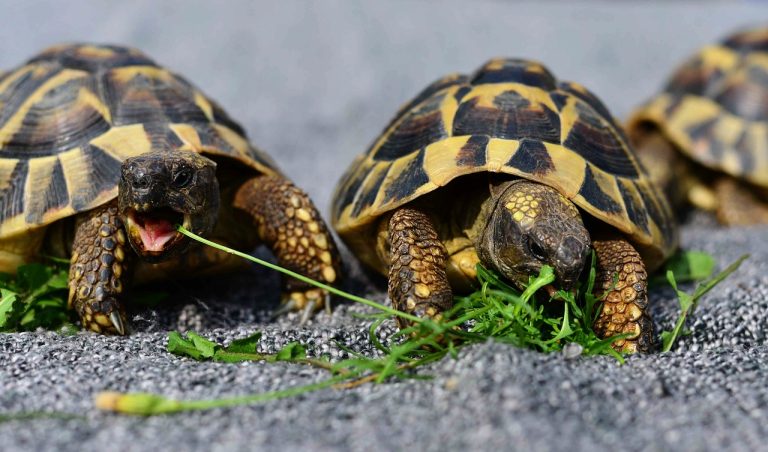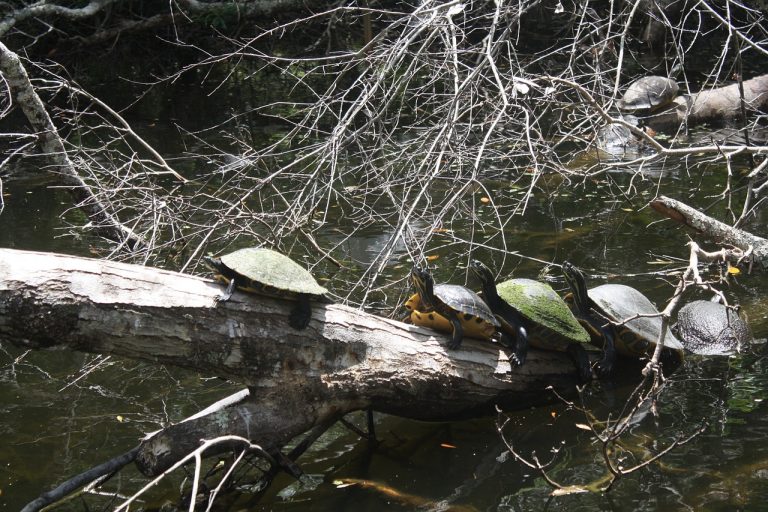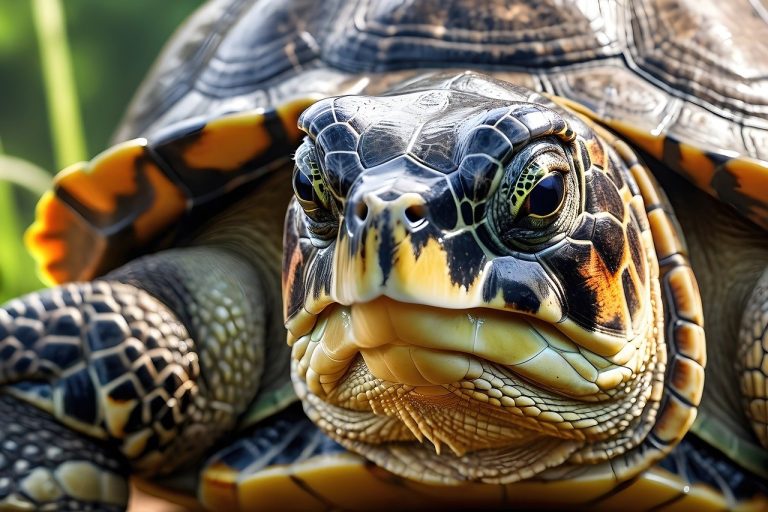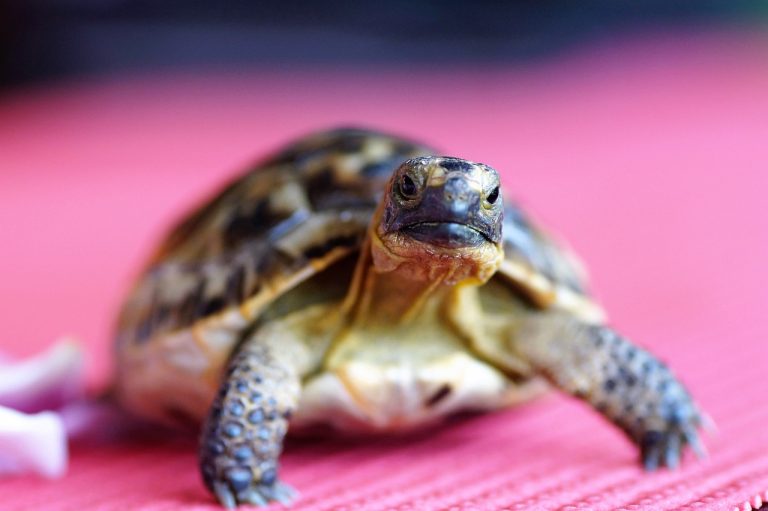Why Did My Sulcata Tortoise Die? [8 Probable Reasons]
It’s true that every tortoise owner strives to ensure the well-being of their pet. However, sometimes, they may overlook obvious signs of illness, which can have serious consequences. While minor ailments may not pose a significant threat, severe illnesses can prove fatal for tortoises.
A Sulcata tortoise can succumb to various factors, including:
- Underfeeding: Inadequate nutrition can weaken the tortoise’s immune system and lead to health complications.
- Overfeeding: Excessive feeding can result in obesity and related health issues.
- Lack of minerals: Deficiencies in essential minerals can impair bodily functions and overall health.
- Stress and anxiety: Environmental stressors or improper handling can cause stress and anxiety, impacting the tortoise’s health.
- Accidents: Injuries from falls or other accidents can be life-threatening for tortoises.
- Illness: Various diseases and infections can afflict tortoises, posing serious health risks if left untreated.
- Age: Advanced age can weaken the tortoise’s immune system and make it more susceptible to illness.
- Drowning: Inadequate access to water or unsuitable water sources can lead to drowning, especially for semi-aquatic species.
It’s crucial for tortoise owners to remain vigilant and address any signs of illness promptly to ensure the continued health and well-being of their beloved pets. Regular veterinary check-ups and proper husbandry practices are essential for maintaining the health of tortoises in captivity.
The good news is that you can prevent the premature death of Sulcata tortoises by ensuring proper care. This article outlines the potential reasons behind a tortoise’s death and offers strategies to combat them effectively.

Why Did My Sulcata Tortoise Die?
There are several factors that can lead to the decline of your Sulcata tortoise’s health, potentially leading to death. It’s important to recognize that a tortoise’s health doesn’t deteriorate overnight; rather, it sends signals indicating its discomfort from the moment it starts feeling unwell. However, these signals can sometimes be misinterpreted by the owner.
- Inadequate Feeding:
Underfeeding can result in malnutrition in Sulcata tortoises, compromising their growth and weakening their immune system. This leaves them more susceptible to illness, with each sickness potentially reducing their lifespan. Treatment:
Owners may not intentionally underfeed their Sulcata tortoise, but misinformation from the internet can lead to confusion. Understanding the intricacies of a Sulcata tortoise’s diet preferences is crucial for ensuring their health and longevity. Interestingly, the diet of a Sulcata tortoise is not static and changes with age, location, and other factors. Therefore, it’s essential to adapt their feeding regimen accordingly. For instance, hatchlings require less but more frequent feeding to support their growth and immunity development. In contrast, adult tortoises require spaced-out meals to maintain their already developed bodies. Understanding these dietary needs is essential for preventing underfeeding and premature death.
Feeding Schedule:
It’s commonly recommended to feed baby Sulcata tortoises twice a day until they mature, while adult tortoises typically adapt well to a meal system of five days a week.
Quantity Measurement:
Various techniques exist for measuring food quantity, but one preferred method is the shell method. This involves imagining a bowl similar in size to the tortoise’s shell and filling it with greens.
Factors Affecting Appetite:
Sometimes, despite offering the correct quantity of food, your Sulcata tortoise may refuse to eat. This could be due to factors such as weather, environment, stress, or illness. Identifying and addressing these issues is crucial for restoring your pet’s appetite and overall health. Further details on why your Sulcata tortoise may not be eating can be found in my previous article.
- Overfeeding Your Sulcata Tortoise
Feeding your Sulcata tortoise too much food can cause problems. These pets love to eat and might not know when to stop munching.
But why is too much food bad for them if they mainly eat greens?
Most of a Sulcata tortoise’s diet is made up of grasses and greens. While many weeds are safe for them to eat, some can have too much protein or phosphorus. It’s okay to give them a little of these weeds, but giving them a lot can cause problems.
Overfeeding can make Sulcata tortoises become overweight. You might notice their thighs, limbs, and neck getting bigger. This makes it hard for them to move around and they might get tired quickly.
Too much food can also harm their kidneys and liver.
Feeding your tortoise a little extra every now and then won’t hurt them. But giving them too much food for a long time can make them sick.
Treatment:
Sulcata tortoises don’t usually eat more than they need. But it’s still important to watch how much they eat.
Their diet should be mostly greens, about 80-90%. They like freshly cut grass, along with other vegetables, plants, and hay. Make sure to include plenty of these greens in their diet.
You can also give them vegetable pellets to make sure they get all the minerals they need. And don’t forget to sprinkle calcium and vitamin D3 supplements on their food to keep their bones and shells healthy.
If you’re not sure which plants are safe for your Sulcata tortoise, here’s a list of greens they can eat:
- Dandelions
- Endive
- Escarole
- Timothy hay
- Orchard grass
- Fountain grass
- Pampas grass
- Cactus pad
- Ryegrass
- Beet
- Mallow
- Trefoil
- Hawkbit
- Carrot
- Hawkweed
- Duckweed
- Chickweed
- Bindweed
- Cabbage
- Lettuce
- Mulberry leaves
- Cat’s ear
- Nettles
- Tomato
- Turnip
- Goat head weed
- Clover, and more.
To measure how much food to give, use the shell method. For the feeding schedule, give baby Sulcata tortoises food every day, and adult tortoises can eat five days a week.
- Vitamin Deficiency:
Hypovitaminosis, or lack of vitamins, occurs in tortoises when they are not given the right foods in their diet. This is different from simply not giving enough food.
For example, feeding a Sulcata tortoise lots of fruits, cabbage, cucumbers, and lettuce might seem like a good idea, but these foods don’t provide the necessary nutrition. Cucumbers and most lettuces have high water content and low fiber or minerals. Similarly, fruits have some mineral value but are not sufficient for Sulcata tortoises, and their high sugar content can upset the stomach.
The lack of vitamins and minerals may seem minor, but it can lead to serious conditions such as vitamin A deficiency and vitamin D deficiency. Sulcata tortoises can suffer greatly from these conditions, experiencing abnormal growth and even death if left untreated.
Treatment:
The best way to prevent hypovitaminosis in Sulcata tortoises is to ensure they are fed a balanced diet. Fill 80-90% of their meals with grasses, weeds, and vegetables that provide actual mineral values. Fruits can be offered occasionally to boost their appetite, but they should not be the main part of their diet. Additionally, adding pellets and supplements to their meals can help prevent mineral deficiencies.
- Dirty Enclosure Hazards:
It might surprise you, but an unclean habitat can be fatal for Sulcata tortoises. Yes, it’s true.
A dirty enclosure poses several risks. Firstly, it provides a breeding ground for bacteria and fungi, putting the tortoises at constant risk of infection. These microorganisms can enter the tortoise’s body through minor cuts or cracks, leading to shell or flesh rot, as well as diseases like mouth rot, ear rot, and respiratory infections.
Sick tortoises become lethargic, malnourished, weak, and more susceptible to further illnesses. Prolonged illness can even result in death.
Moreover, an unhygienic environment can attract worms, which can infect the tortoises. Sulcata tortoises, being naturally curious, may ingest parasites while exploring their surroundings. Unfortunately, these parasites can multiply in the tortoise’s gut, causing suffering.
Treatment:
As the saying goes, prevention is better than cure. It’s crucial to maintain cleanliness in the enclosure to prevent diseases.
Clean the habitat thoroughly at least twice a month, sterilizing the soil, water bowl, and toys. Additionally, regularly deworm your Sulcata tortoise to prevent parasite infestations.
If your tortoise does become infected with a bacterial or fungal disease, prompt treatment is essential. Monitor the tortoise for any abnormal behavior or signs of illness and try to identify the specific disease. Seek veterinary assistance if unsure, as timely diagnosis and treatment are crucial for the tortoise’s well-being.
- Stress in Sulcata Tortoises:
Some owners may not believe that Sulcata tortoises can experience stress, but like humans, these tortoises can also feel anxiety or panic. In severe cases, stress can even lead to death, although such incidents are rare.
But how does stress contribute to the decline of a Sulcata tortoise’s health? Researchers have identified two main reasons:
Firstly, stress can compromise the tortoise’s immune system. It disrupts the body’s response to complex molecular reactions, weakening its ability to fight off diseases. Consequently, the tortoise becomes more susceptible to illness.
Secondly, stress can lead to depression in Sulcata tortoises, causing them to lose motivation. This results in lethargy, reduced participation in daily activities, and loss of interest in eating. Consequently, the tortoise becomes weaker and more vulnerable to diseases.
While stress may not immediately kill a Sulcata tortoise, it can lead to prolonged suffering and eventual death due to weakness or disease.
To alleviate stress in a Sulcata tortoise, it’s essential to identify and address the factors causing stress.
Rough Handling:
Sulcata tortoises are not domesticated animals like cats or dogs; they are wild creatures in captivity. Therefore, frequent touching or handling can stress them out, unlike your usual pets.
Rough handling can make these tortoises feel threatened and frightened, potentially leading them to become defensive or aggressive.
Solution:
- When picking up Sulcata tortoises, be gentle and avoid rough handling.
- Keep interactions via touch brief to minimize stress.
- If the tortoises seem irritated or uncomfortable, give them space and avoid further handling.
Tortoises Are A Bully
Yes, turtles, including Sulcata tortoises, can indeed exhibit bullying behavior towards each other. This aggression can arise over various factors such as food, space, or basking spots, often as a display of dominance.
When housed together, multiple Sulcata tortoises may engage in bullying behavior, which can escalate into fights if not addressed promptly. This can involve nipping, biting, kicking with legs, or spinning around each other, leading to physical harm and impacting the victim’s mental well-being, potentially causing it to stop eating.
Solution:
- Provide a spacious habitat with ample hiding spots to reduce confrontations.
- Ensure an abundance of food options to minimize competition.
- If aggressive behavior persists, consider separating the tortoises into individual enclosures to prevent further conflicts.
- Avoid pairing tortoises that display hostility towards each other to maintain a harmonious living environment.
Transferring Tortoises
Yes, turtles, including Sulcata tortoises, can indeed exhibit bullying behavior towards each other. This aggression can arise over various factors such as food, space, or basking spots, often as a display of dominance.
When housed together, multiple Sulcata tortoises may engage in bullying behavior, which can escalate into fights if not addressed promptly. This can involve nipping, biting, kicking with legs, or spinning around each other, leading to physical harm and impacting the victim’s mental well-being, potentially causing it to stop eating.
Solution:
- Provide a spacious habitat with ample hiding spots to reduce confrontations.
- Ensure an abundance of food options to minimize competition.
- If aggressive behavior persists, consider separating the tortoises into individual enclosures to prevent further conflicts.
- Avoid pairing tortoises that display hostility towards each other to maintain a harmonious living environment.
New Home
It’s common for Sulcata tortoises to eat less when they’re introduced to a new environment. The changes can stress them out, leaving them feeling insecure and vulnerable.
Solution:
- Be patient; the tortoises will eventually start eating once they’ve adapted to their new surroundings.
- In the meantime, continue offering them meals regularly, even if they initially refuse to eat. This ensures they have access to food when they’re ready to eat again.
Noise Everywhere
Sulcata tortoises thrive in a peaceful environment reminiscent of their natural habitat, and loud noises, such as music or other disturbances, can stress them out.
Solution:
- Remove any sources of loud noise from the vicinity of the tortoise habitat to create a calm and serene environment for them.
The Sulcata Is Not Feeling Okay!
When a Sulcata tortoise is feeling unwell, it can experience significant stress and discomfort. Illness, accidents, or injuries not only cause physical pain but also affect the tortoise’s mental well-being, leading to loss of appetite and demotivation.
Solution:
- Take prompt action to treat the sick tortoise. If you’re knowledgeable and experienced, you can consider home treatment.
- However, if you’re unsure or inexperienced, it’s crucial to seek guidance from a reptile veterinarian or an expert in tortoise care. They can provide proper diagnosis, treatment, and medication to help the tortoise recover.
You Have Been Ignoring The Signs Of Illnesses
In many cases, severe diseases are often the cause of sudden death in Sulcata tortoises. However, these illnesses typically manifest symptoms long before reaching a critical stage. Recognizing these signs and taking prompt action can potentially save the tortoise’s life. Failure to address these symptoms may result in a decline in the tortoise’s health, ultimately leading to its demise.
Here are some common diseases of Sulcata tortoises and possible home treatments:
- Respiratory Infections:
Symptoms: Wheezing, difficulty breathing, nasal discharge.
Treatment: Keep the tortoise warm and ensure proper humidity levels in the enclosure. Provide adequate ventilation and consult a veterinarian for antibiotics if necessary. - Shell Rot:
Symptoms: Soft or discolored areas on the shell, foul odor.
Treatment: Keep the shell clean and dry, and apply topical antiseptic ointments. Ensure proper hygiene in the enclosure to prevent bacterial growth. - Metabolic Bone Disease (MBD):
Symptoms: Softening or deformities in the shell, swollen limbs, lethargy.
Treatment: Provide a calcium-rich diet and exposure to UVB lighting for proper calcium absorption. Consult a veterinarian for supplemental calcium injections if needed. - Parasitic Infections:
Symptoms: Weight loss, diarrhea, lethargy.
Treatment: Deworm the tortoise regularly using prescribed medications. Ensure proper hygiene in the enclosure to minimize the risk of parasitic infections. - Egg Binding (in female tortoises):
Symptoms: Lethargy, swollen abdomen, difficulty laying eggs.
Treatment: Provide a warm soak to help relax the muscles and facilitate egg laying. Consult a veterinarian for assistance if the tortoise is unable to lay eggs naturally.
It’s essential to monitor the tortoise’s health regularly and seek professional veterinary care if you notice any concerning symptoms. Early intervention can significantly improve the chances of successful treatment and recovery.
Sulcata Tortoises Can Not Swim
A common cause of death for Sulcata tortoises is drowning. Many owners overlook the fact that tortoises cannot swim, leading to tragic accidents near water bodies such as pools.
Unlike turtles, tortoises lack webbed feet or flippers and have elephant-like feet. Additionally, their shells are not streamlined but domed, making swimming challenging. Consequently, if a tortoise falls into water, it can only float for a brief period, typically around 2 to 3 minutes, before losing consciousness and drowning.
To prevent such accidents, it’s essential to take precautions, such as installing fences around pools to restrict tortoise access.
If your tortoise accidentally falls into the water, immediate action is necessary. Retrieve the tortoise from the water and perform basic first aid to remove water from its lungs. Then, seek veterinary assistance promptly for proper evaluation and treatment to ensure the tortoise’s recovery.
The Tortoise Had Lived Enough
Sulcata tortoises have a remarkable lifespan of up to 150 years in their natural habitat. However, in captivity, their lifespan is slightly shorter, typically around 80 years or slightly more. Therefore, if your tortoise passes away around this age, it could be due to aging.
In their later years, elderly Sulcata tortoises may exhibit decreased appetite and reduced activity levels. They may become more lethargic and spend more time resting. While these changes are often a natural part of aging, it’s still advisable to consult a veterinarian for a thorough checkup to ensure there are no underlying health issues contributing to these changes.
Can Sulcata Tortoises Die From Heat?
Sulcata tortoises are susceptible to overheating, which can lead to dehydration and ultimately, death. When exposed to high temperatures, these creatures seek cooler spots to regulate their body temperature. However, if they fail to find relief from the heat, they may suffer from heat stroke, a potentially fatal condition.
Signs of heat stroke in a tortoise include foam discharge from the mouth, vomiting, lethargy, and loss of appetite. It’s crucial to transfer the tortoise to a cooler area immediately if any of these symptoms are observed.
Sulcata tortoises are particularly vulnerable to heat stroke because they rely on external sources to regulate their body temperature. Just as they struggle in extreme cold, they cannot tolerate excessively hot conditions.
To prevent heat-related issues, avoid exposing baby Sulcata tortoises to scorching heat, as their smaller size makes them more susceptible to heat stress. Providing shaded areas in outdoor habitats and creating temperature gradients within enclosures can help tortoises regulate their body temperature and avoid overheating.
Before You Leave…
There are numerous factors that can contribute to the death of your Sulcata tortoise. While you cannot control its lifespan, you can certainly take steps to ensure its well-being and potentially prolong its life.
Provide your tortoise with a spacious and clean habitat, ensuring it has enough room to move around comfortably. Maintain cleanliness by regularly cleaning the enclosure and providing fresh water.
Offer a balanced diet consisting of greens, vegetables, and supplements to meet its nutritional needs. Monitor its health closely and schedule regular checkups with a veterinarian to detect any health issues early on.
By following these guidelines and providing proper care, you can enhance the chances of your Sulcata tortoise living a long and healthy life.





